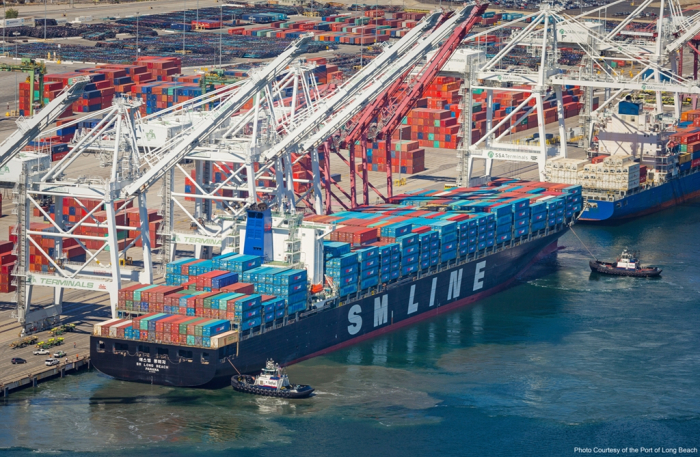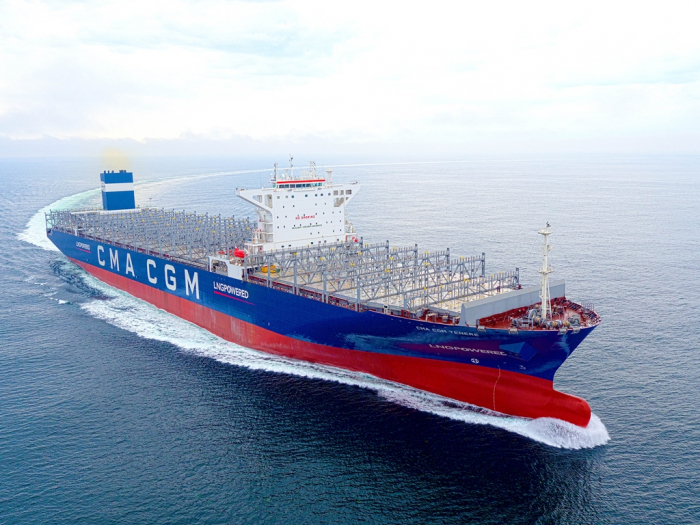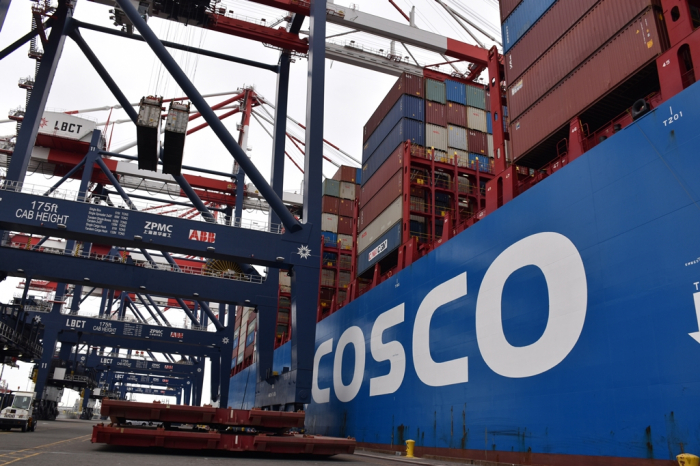Shipping & Shipbuilding
Korea, US to work on Busan-Seattle green cargo shipping corridor
Partaking in the establishment of green routes is crucial for Korea to rise in the shipping industry’s pecking order
By Nov 16, 2022 (Gmt+09:00)
3
Min read
Most Read
LG Chem to sell water filter business to Glenwood PE for $692 million


Kyobo Life poised to buy Japan’s SBI Group-owned savings bank


KT&G eyes overseas M&A after rejecting activist fund's offer


StockX in merger talks with Naver’s online reseller Kream


Mirae Asset to be named Korea Post’s core real estate fund operator



South Korea and the US are looking to create a green cargo shipping corridor linking the port of Busan with the ports of Seattle and Tacoma as part of a global drive to decarbonize the shipping industry.
Korea’s Ministry of Oceans and Fisheries and its US counterpart have agreed to launch a feasibility study on creating a green shipping route between Busan, Korea’s largest seaport, and the Seattle-Tacoma ports in December.
The decision follows an agreement between the two countries to cooperate in a push for carbon neutrality at the 2022 United Nations Climate Change Conference, more commonly referred to as COP 27, held in Egypt earlier this month.
The US government proposed establishing the green cargo shipping corridor and Korea accepted it, industry sources said on Wednesday.
Launching green shipping routes is a global initiative to achieve carbon neutrality in the shipping industry by 2050.
Major shipping players such as the US, UK and several European countries are striving to take the lead in the industry’s efforts to reduce maritime carbon emissions.

PORT POLLUTION, A HEADACHE FOR GOVERNMENTS
With transoceanic cargo shipping rapidly growing and the COVID-19 pandemic exacerbating port congestions, port pollution, alongside increasing amounts of climate, air and ocean pollution, has become a big issue among governments and port authorities.
Green corridors are maritime routes that showcase low- and zero-emission lifecycle fuels and technologies with the ambition to achieve zero greenhouse gas emissions across all aspects of the corridor in support of sector-wide decarbonization no later than 2050.
As a signatory to the Clydebank Declaration launched at COP 26 last year, the UK has promised to launch six green corridors on some of the world’s busiest shipping routes by 2026.
In response, the US, at this year’s COP 27, unveiled the Green Shipping Challenge, which aims to create 10 green corridors over the next decade.
Through the campaign, the US plans to increase the proportion of its carbon-free ships to 5% of the world's ocean-going fleet by 2030 and to transport 10% of cargo by carbon-free ships.

WORLD’S THIRD GREEN CORRIDOR
If the Busan-Seattle/Tacoma route is realized, it would become the world’s third green shipping corridor following two similar announcements by other countries – the Los Angles-Shanghai route and the Singapore-Rotterdam route.
The creation of a green shipping route also requires transoceanic ships to use low-carbon or non-carbon fuels such as methanol, ammonia and hydrogen as well as building a new bunkering, or marine fuel supply, infrastructure.
In this process, analysts said international technologies and standards are established, and countries at the forefront of the decarbonization efforts will likely emerge as new powers in the shipping industry.
Toward this end, the Korean government said it will actively cooperate with the International Maritime Organization (IMO) in working out carbon-emission regulations and clean fuel systems. Korea plans to turn 528 public and private ships into carbon-free, eco-friendly vessels.
“It is important to take the lead in building a new international technology standard symbolized by the green routes,” said Minister of Oceans and Fisheries Cho Seung-hwan.
Write to Jung-hwan Hwang at jung@hankyung.com
In-Soo Nam edited this article.
More to Read
-
 LogisticsHyundai Glovis signs $796 million shipping deal with global automaker
LogisticsHyundai Glovis signs $796 million shipping deal with global automakerNov 11, 2022 (Gmt+09:00)
1 Min read -
 Shipping & ShipbuildingKSOE in $1.5 billion shipbuilding deals with Maersk, Excelerate Energy
Shipping & ShipbuildingKSOE in $1.5 billion shipbuilding deals with Maersk, Excelerate EnergyOct 05, 2022 (Gmt+09:00)
2 Min read -
 LogisticsKorean exporters fret over looming labor strife at Long Beach, Hamburg
LogisticsKorean exporters fret over looming labor strife at Long Beach, HamburgJul 12, 2022 (Gmt+09:00)
2 Min read -
 Shipping & ShipbuildingOpportunity costs on the rise at Korean shipping firms
Shipping & ShipbuildingOpportunity costs on the rise at Korean shipping firmsJun 27, 2022 (Gmt+09:00)
2 Min read -
 Shipping & ShipbuildingKorean shipbuilders win record LNG carrier orders; 2022 outlook bright
Shipping & ShipbuildingKorean shipbuilders win record LNG carrier orders; 2022 outlook brightDec 08, 2021 (Gmt+09:00)
2 Min read
Comment 0
LOG IN


